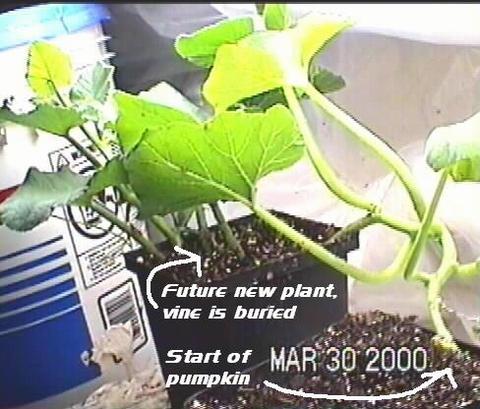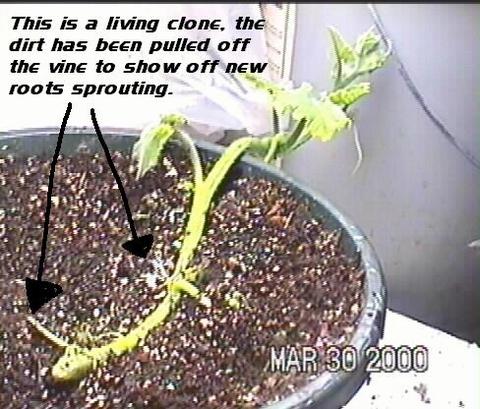
|
|||||||||||||
How to Clone Pumpkins off the Main Vine by Marc Sawtelle | |
TECHNIQUES AND METHODS: | |
BENEFITS OF CLONING | |
POSSIBLE LONG TERM USES BY CLONING | |
---
| |
It may appear as I am a not a serious or experienced grower, as my personal best was a 432 here in Colorado Springs this year, while Joe Scherber and Kevin Holman both destroy the old Colorado state records exceeding the 800 pound mark {also this year}. I have been growing for 9 years now, growing just average genetic seeds. Last year I was lucky to have met Joe Scherber and see some 600 pound pumpkins. WOW! I was in disbelief that Colorado supported conditions favorable enough to grow them so large. He explained it just takes finding good genetic seeds if my growing techniques were not the problem. He suggested I try to request as many seeds from larger pumpkins, and hang on to some until I found seed proven to grow the large ones. I did just that, and I did have a good stock of good genetics going into this season.
| |
The season was lost in mid May though. In spring we have mites which find cold frame pumpkin plants as good hosts. I usually just use the "safe spray" stuff they sell for houseplants, which has always done the job, until this season. Someone in my family dumped 1/2 of a bottle of Liquid Seven into an empty "safe spray" bottle, and you can guess the rest! It took until mid July to get things going again, and I knew I would have yet another sub par year. I used the rest of the year experimenting with my own breeding program. I usually grow 2 plants in 880 square feet with one pumpkin per plant, but instead I grew 7 pumpkins on 3 plants. Two of the three plants seem like they could have really done a lot more, if not for the "accident", which prevented me from having plenty of leafs and rooted vines when the first and second week of July came. I pollinated females with similar genetic backgrounds or traits, and 3 of the 7 pumpkins may be great crosses. I will find out how well my match making is next year, when other growers test them out. I, though, will finally be testing out my theory!
| |
SO WHAT IS THE CLARION GENETIC AND CLONING THEORY?
| |
Cloning is nothing new to the horticulture world, as some make it seem. This is not any "Dolly the sheep" cloning stuff...just simple plant propagation techniques and an open mind to try them on a plant which requires a lot of care in between the growing seasons. I experimented all of last winter trying various cloning methods and techniques, and seen 2 other growers raise them without any different results than if it was a seed started plant.
| |
One of the best advantages I noticed over a seed started plant is that once it gets rooted outside and gets some larger "outdoor" leafs, a clone has plenty of male flowers, and even some females to "practice" or "experiment" on as early as the first week in June. By the time the golden zone to pollinate rolls around, there are plenty of females and males to pollinate! No need to put all your hopes on just a couple of fruits, not when there may be 10-15 getting ready to bloom on a plant which can have many "main stems" if the grower so desires.
| |
I have received a lot of personal e mails about this subject ever since I posted some news explaining that I was actually trying it. I will not post any names of growers that are experimenting this winter, as I respect the fact some of them may not want everybody else knowing that they are currently experimenting with it. Those that want to post results to me in private can do so without me spilling the news all over the pumpkin sites. There have been a couple of growers I have been curious about {You know who you are}. Those who want more info can privately e mail me if they so desire. |

|

|
Questions or comments? Send mail to Ken AT bigpumpkins.com.
Copyright © 1999-2024 BigPumpkins.com. All rights reserved.